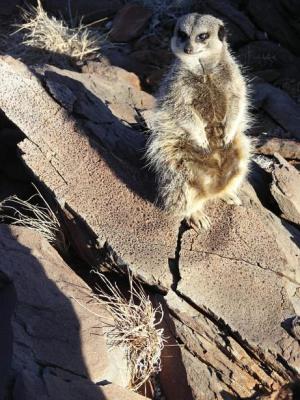Podcast: Play in new window
BOB HIRSHON (host):
Prehistoric raindrops. I’m Bob Hirshon and this is Science Update.
Believe it or not, some fossils contain impressions of raindrops that fell billions of years ago. Astrobiologist Sanjoy Som, now at NASA-Ames Research Center, used them to study the early Earth’s atmosphere. He explains that if the air was denser back then, raindrops would have fallen more slowly.
SANJOY SOM (NASA-Ames Research Center/University of Washington):
And thus the raindrop impressions would be smaller. Versus if the air pressure was thin, then the drops would be falling faster, and the imprints would be larger.
HIRSHON:
While at the University of Washington, his team compared the fossilized raindrop impressions to new ones, which they made under precise conditions in the lab. Their work suggests that the air pressure back then was much closer to today’s than previously thought. Som says comparing conditions on the young Earth to the present may help us make predictions about planets beyond the solar system. I’m Bob Hirshon for AAAS, the Science Society.

